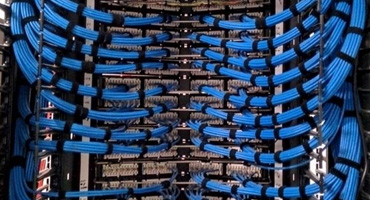It may seem that the world is going wireless. And it is. But not so much in enterprise networks. Wired networks are still prevalent in most businesses. And this is where the patch panel comes in.

It may seem that the world is going wireless. And it is. But not so much in enterprise networks. Wired networks are still prevalent in most businesses. And this is where the patch panel comes in.
A patch panel is a passive networking device that is an effective cable management tool, typically used in a data center and copper and fiber-based networks. Patch panels contain a set number of ports to connect, manage and organize a group of cables, both incoming and outgoing. Each port contains a cable that goes to a different location. They are available in various sizes, from the smaller patch panels with fewer ports to the larger variants with hundreds of ports.
Patch panels are designed to handle multiple network ports to connect different IT devices and outgoing and incoming cables. They are used in local area networks, data centers, security, audio video and electrical systems. Every port in a patch panel leads to a different destination. The panel bundles all the connections together to connect to another network. This is typically how patch panels are a part of LAN, where they connect multiple users, other networks, or to the internet.
Patch panels are an indispensable device as they offer many benefits. They are a worthwhile investment as they offer the following advantages:

As patch panels are located closer to the actual equipment, it allows for using a shorter patch cable. Reduced cable slack means less clutter.
It is imperative to keep a focus on organization and management from the initial stages of installing the cables. With a large number of cables running through the patch panel, it can easily become crowded and chaotic which can make troubleshooting inconvenient. Follow the below-outlined cable management techniques to avoid that from happening.
A data center can have hundreds of cables, so it is important to know the purpose of each cable. Although this can be a tedious process, all cables should be properly labeled at both ends, and in many cases, along the middle as well. Having labels on the cables will make it much easier for technicians to identify why something isn’t working, to replace cables and most importantly confirm they are working on the right lines.
Lastly, Cable management should be made a priority and not an afterthought. It is crucial to develop a cable management plan or guidelines before any cable installation.